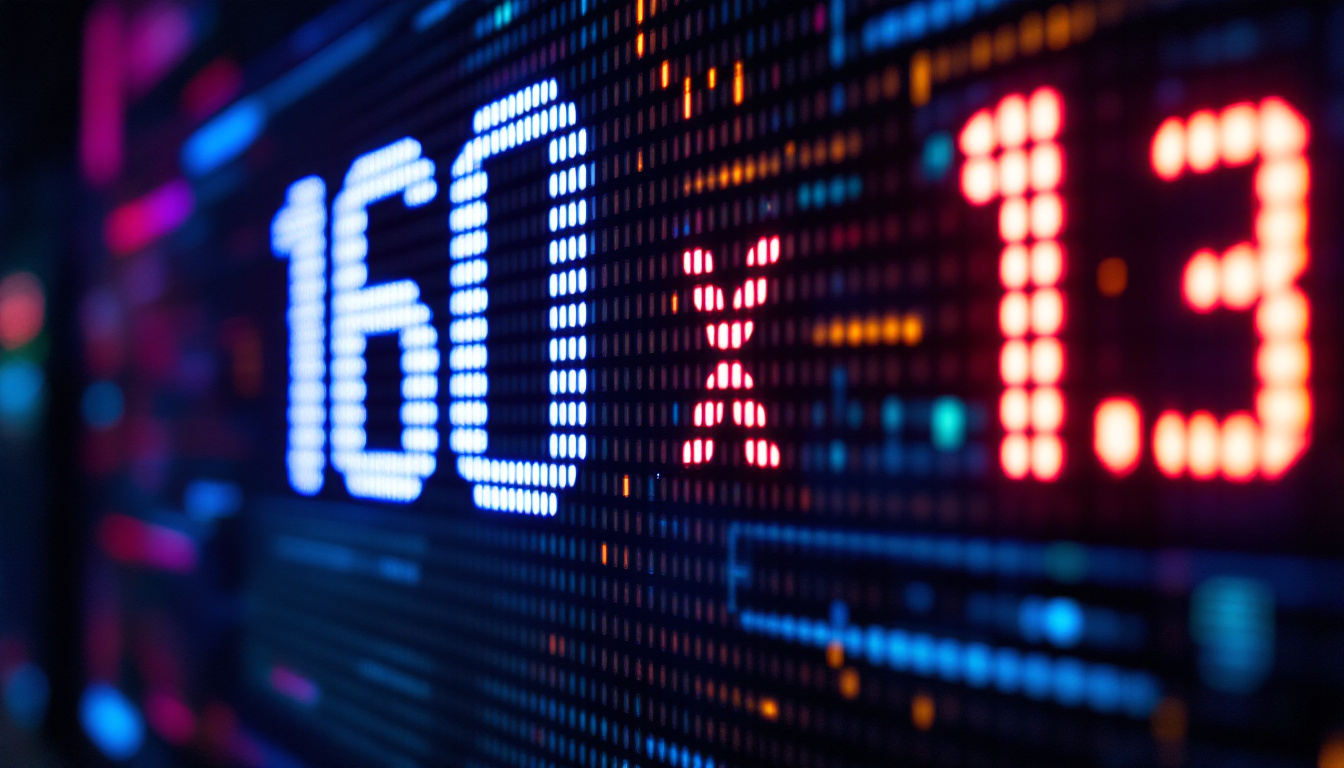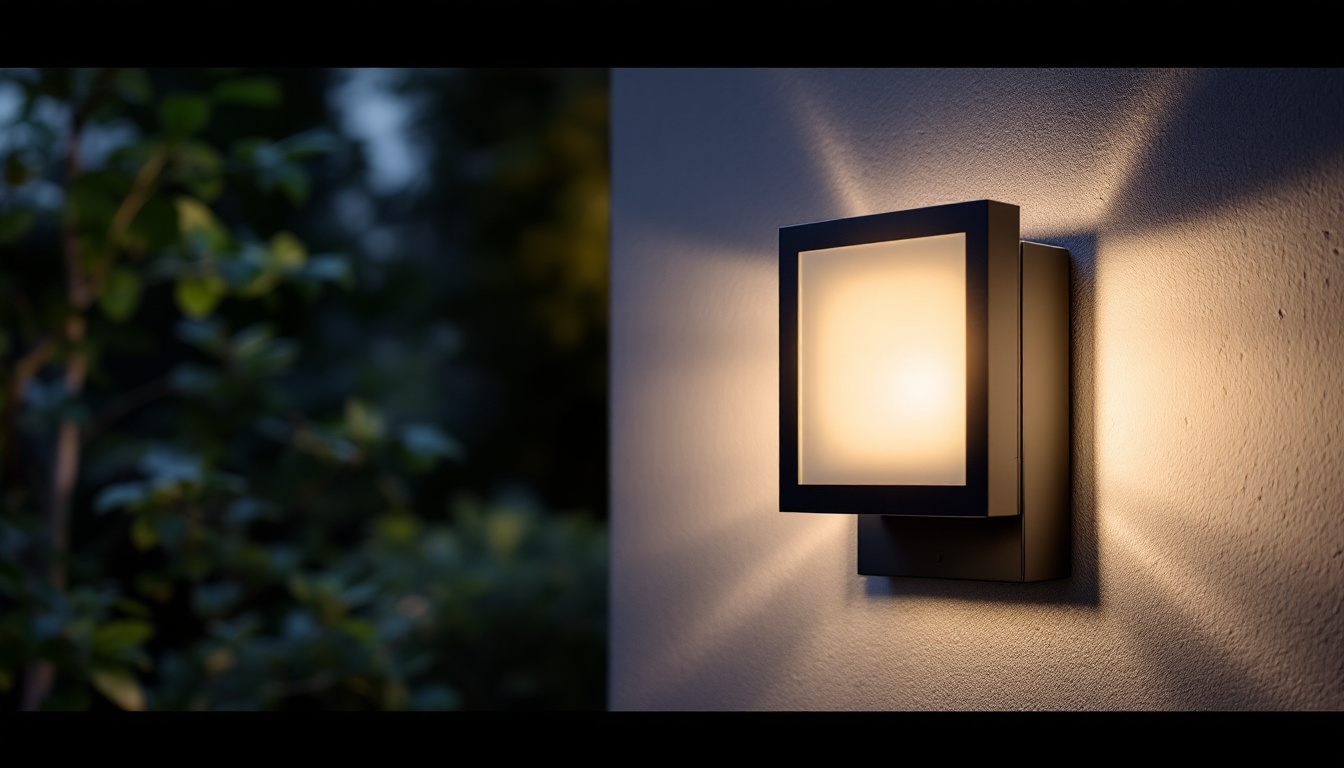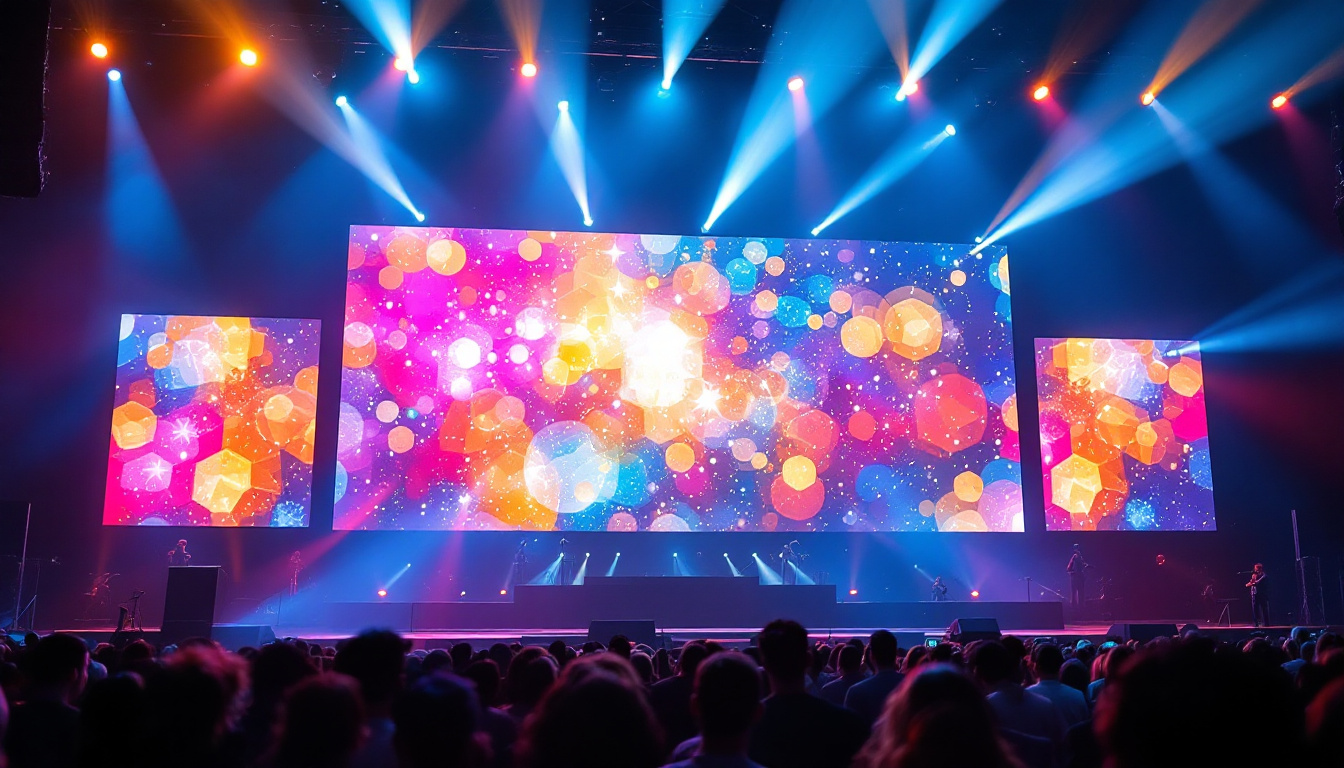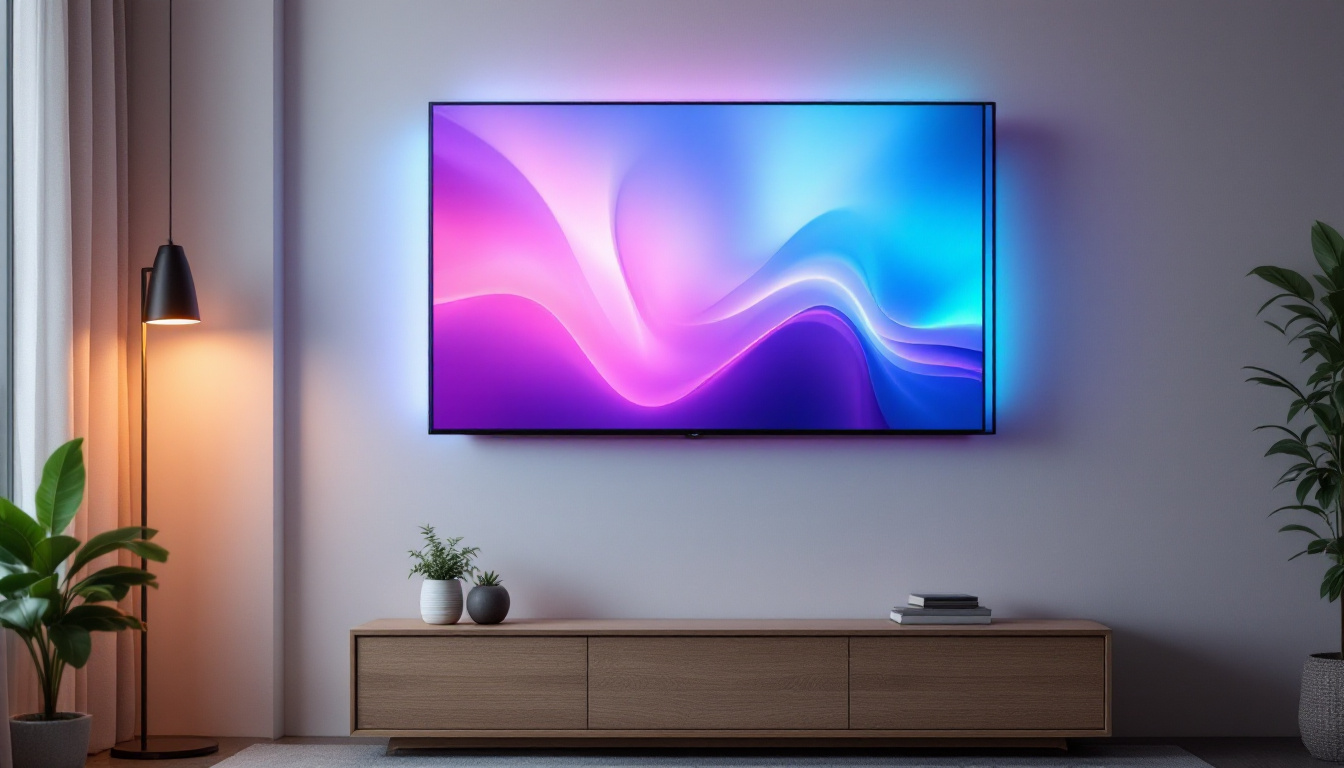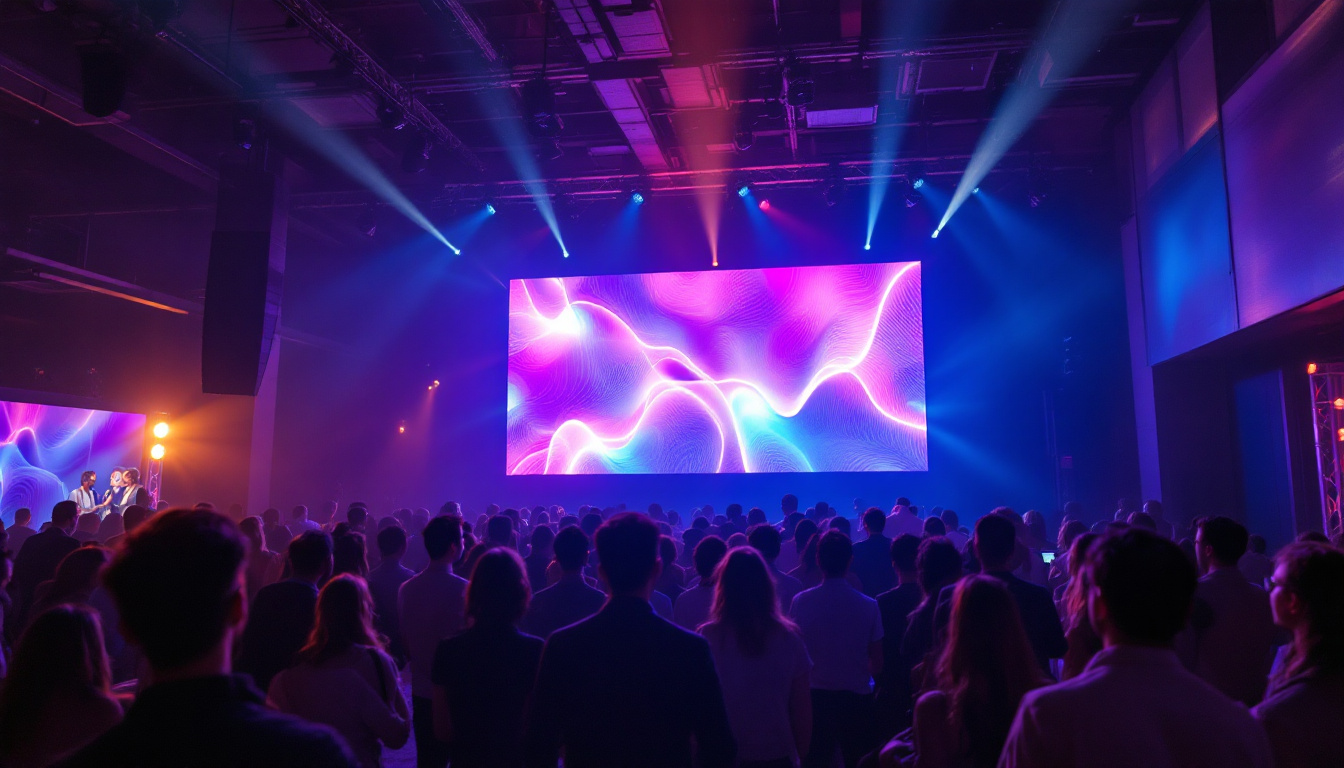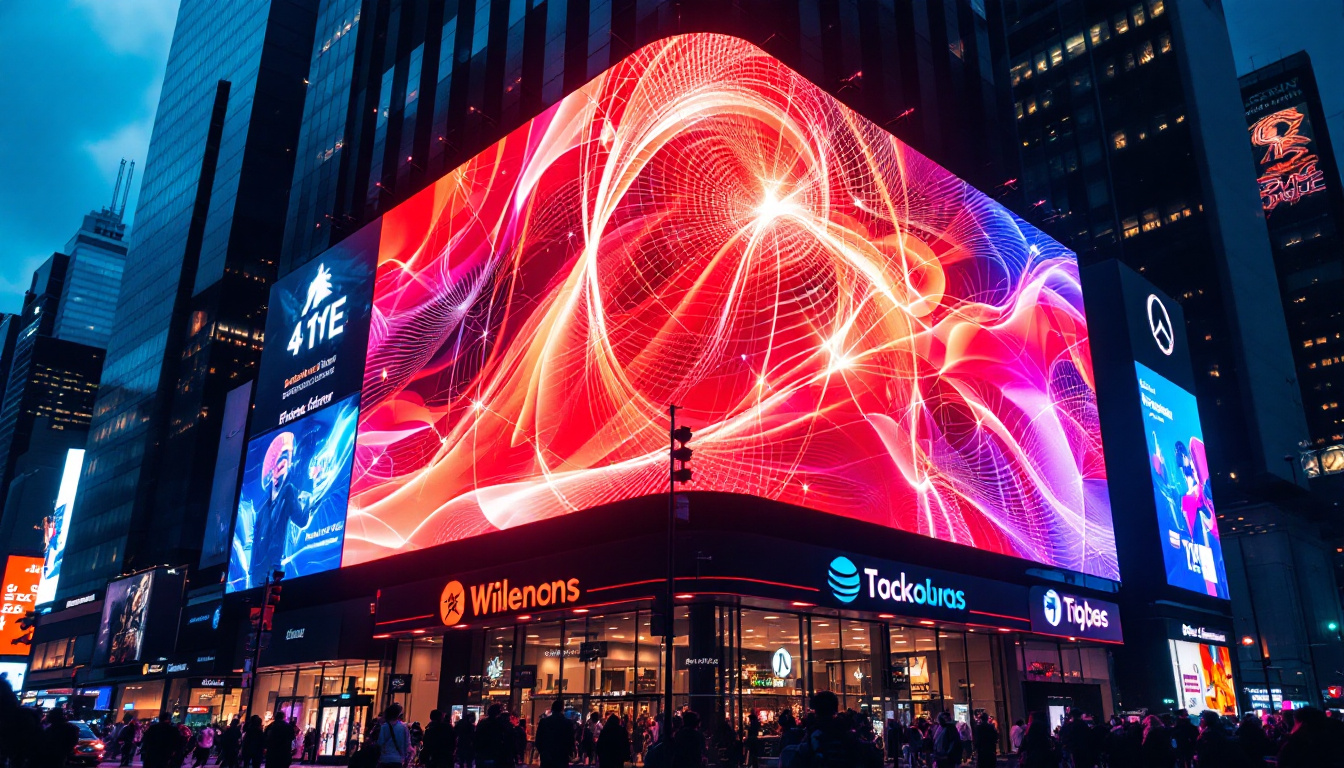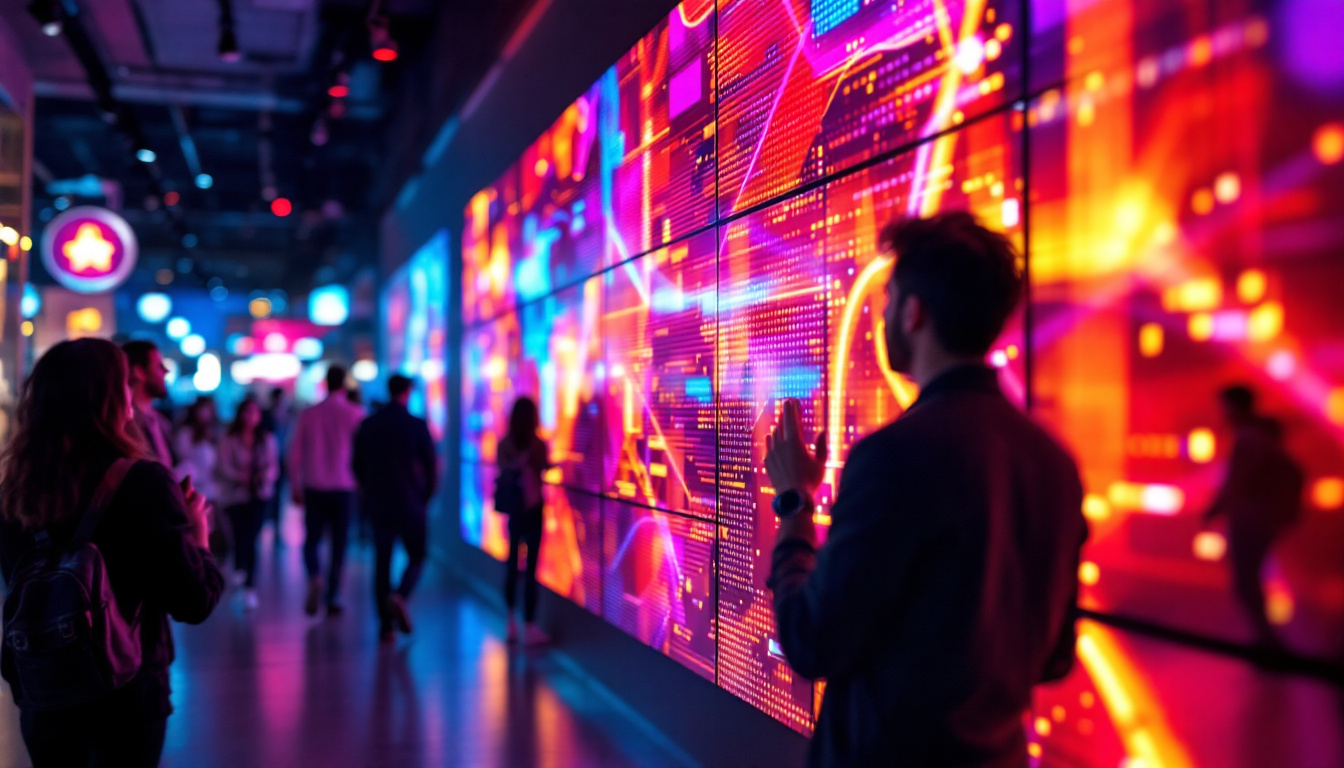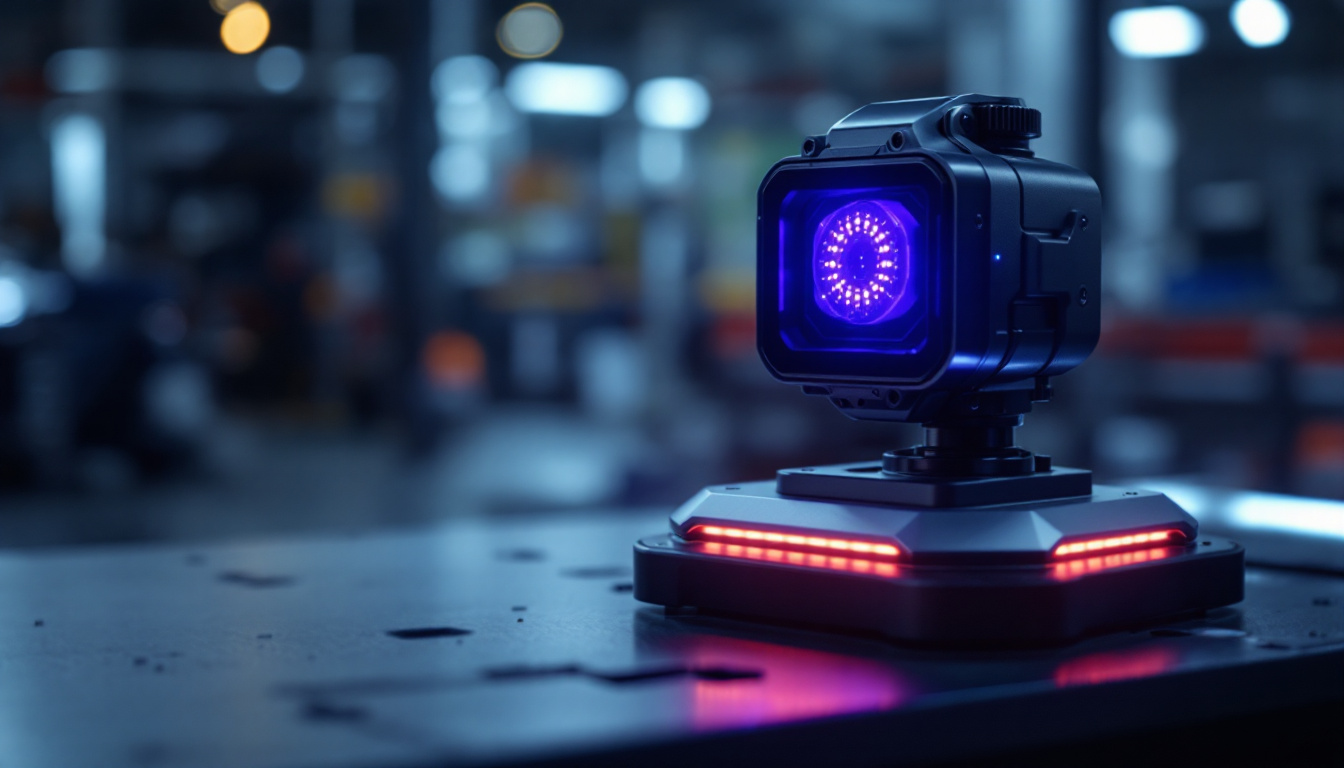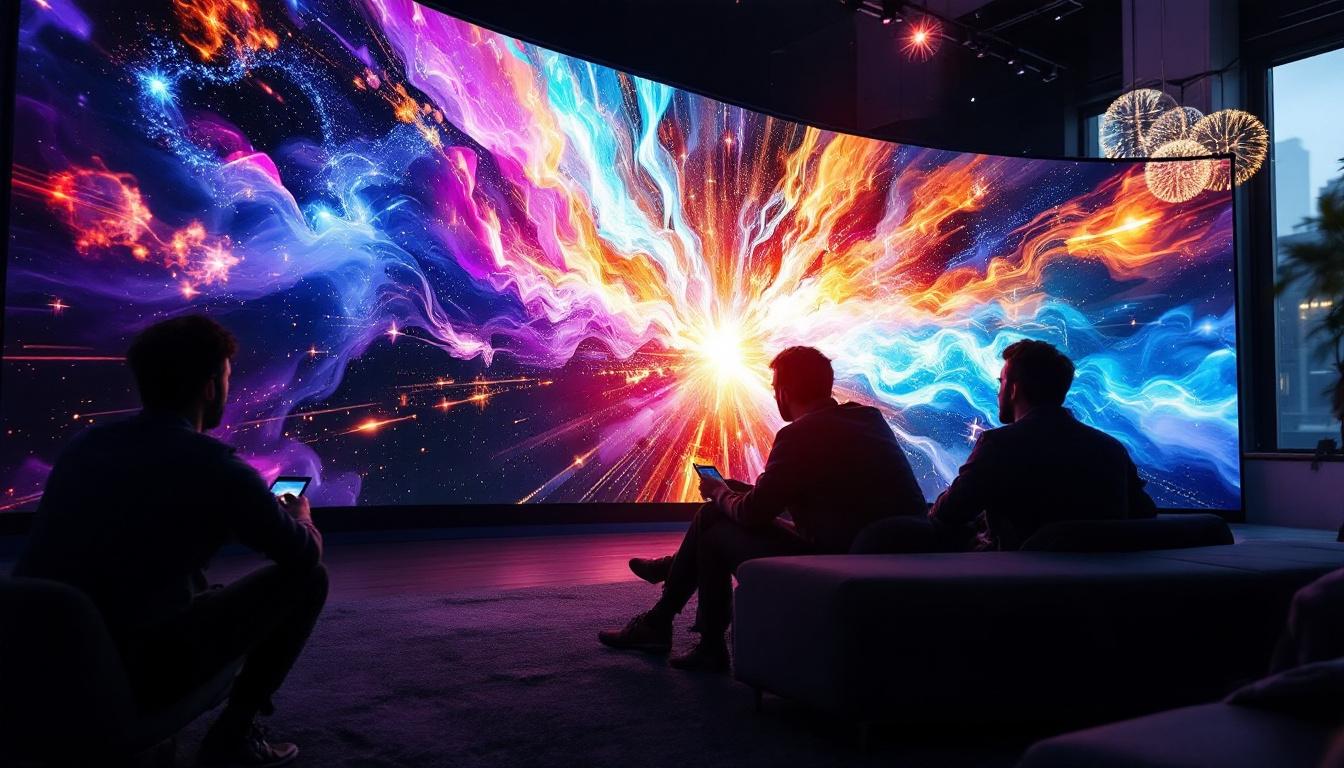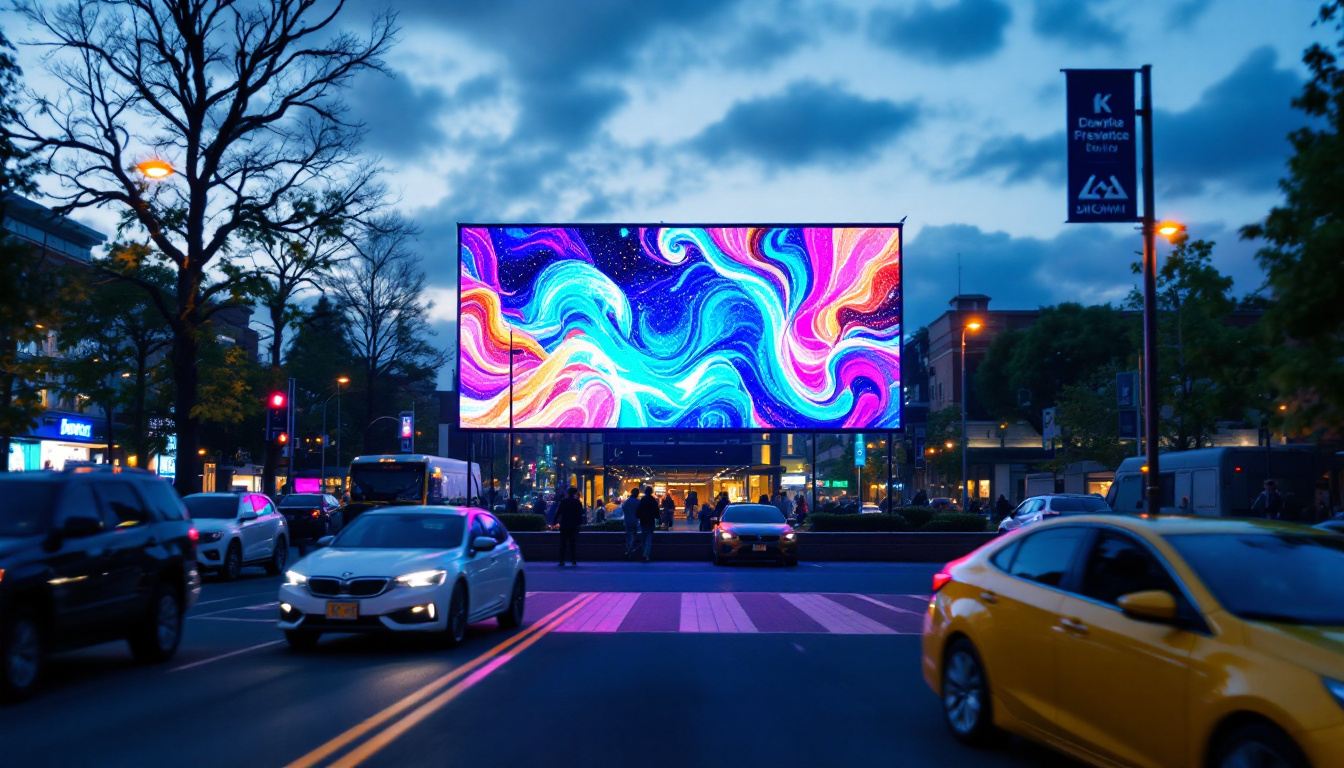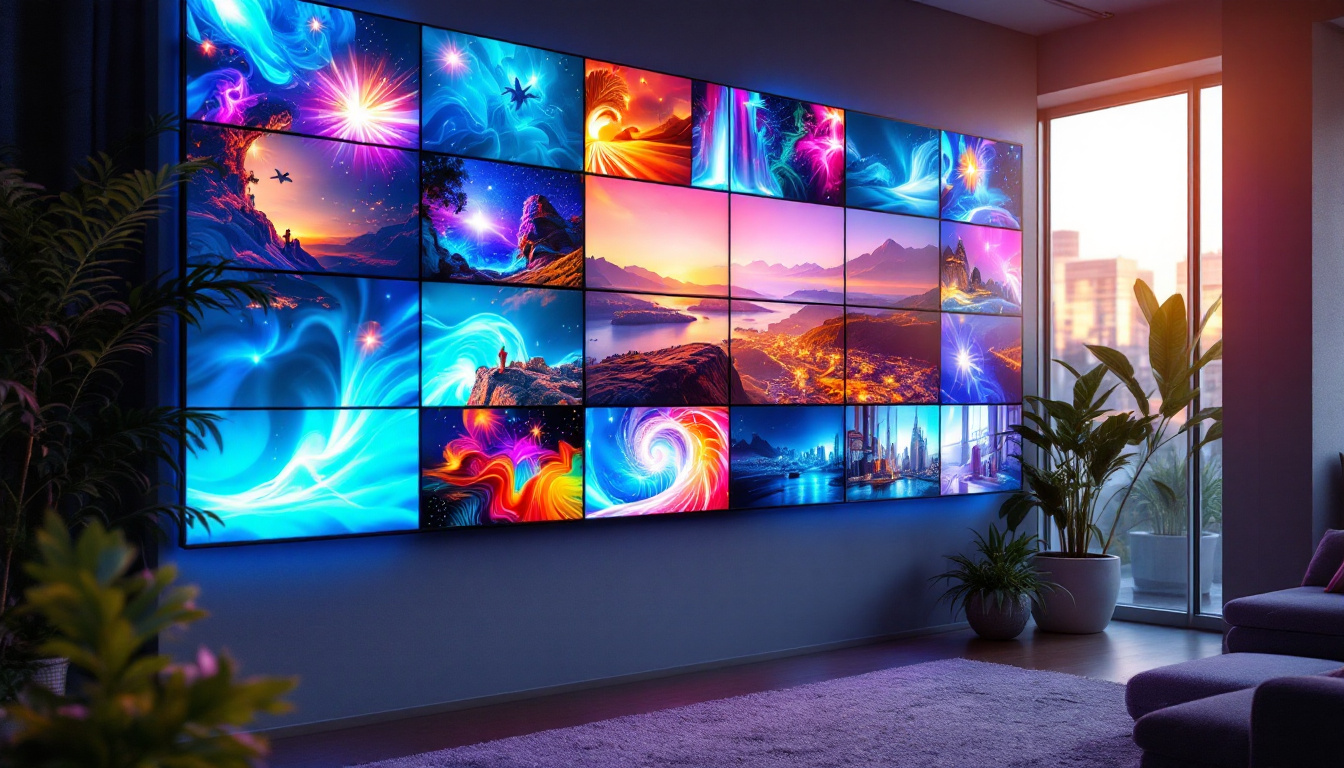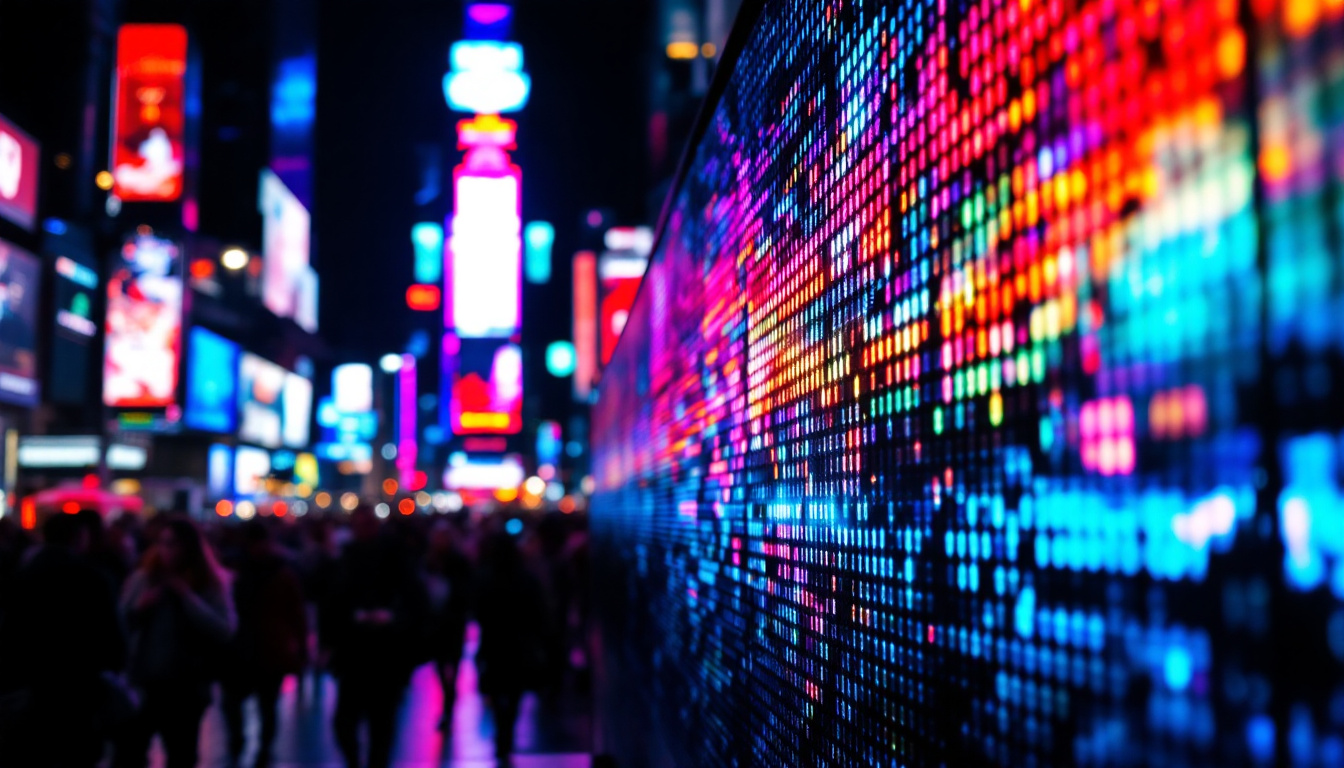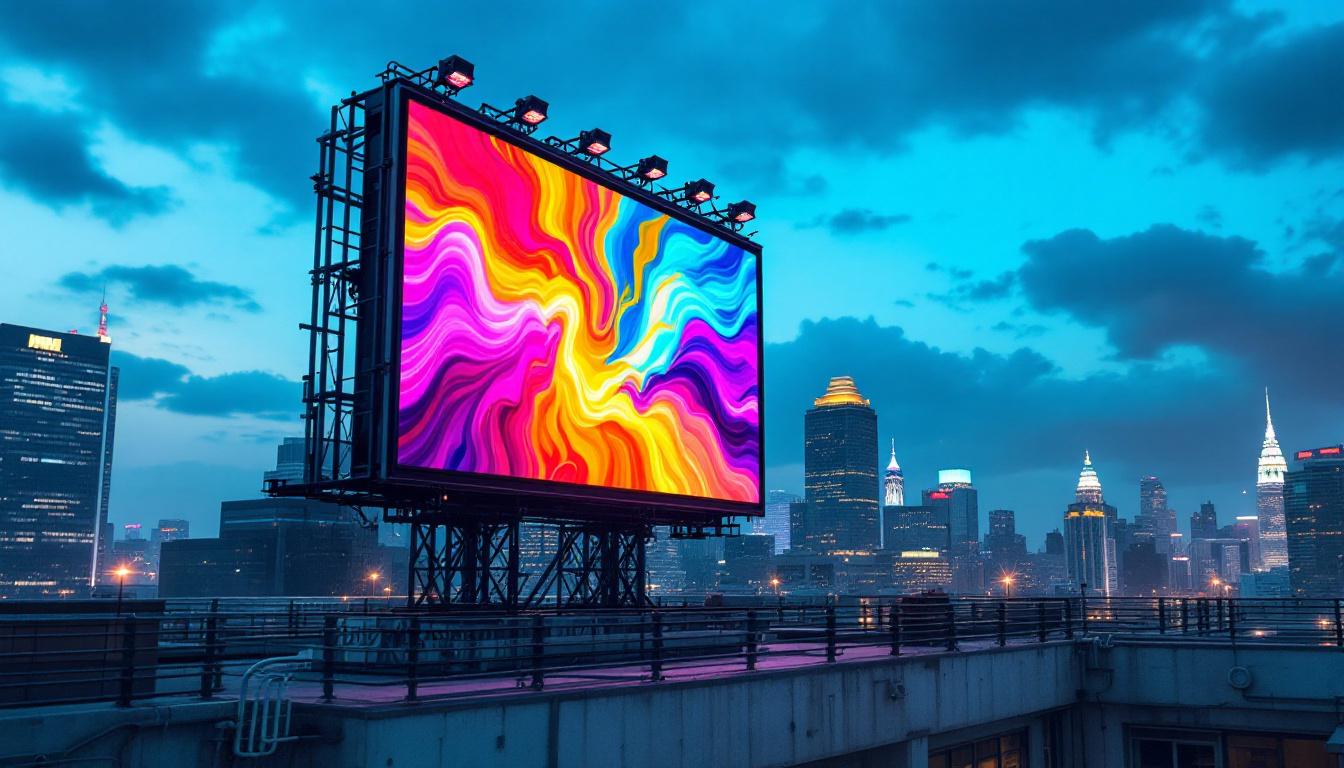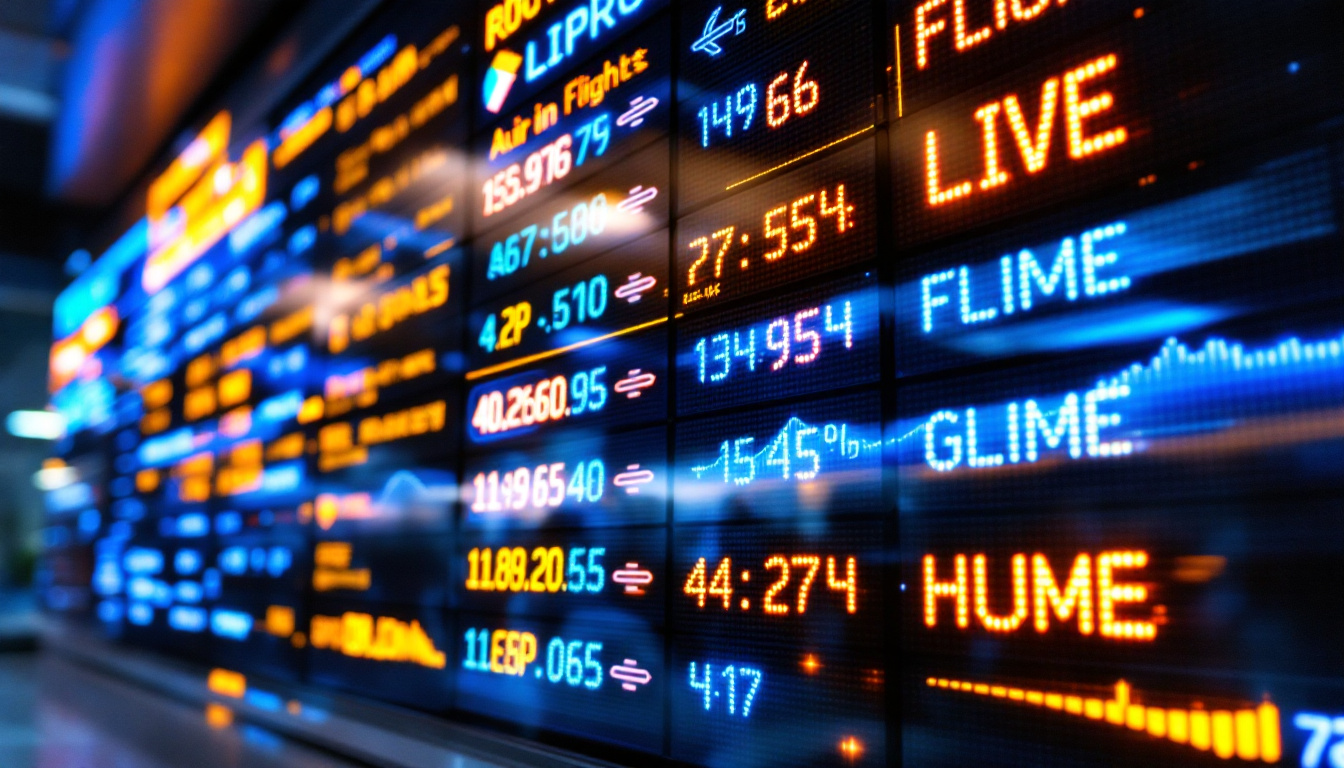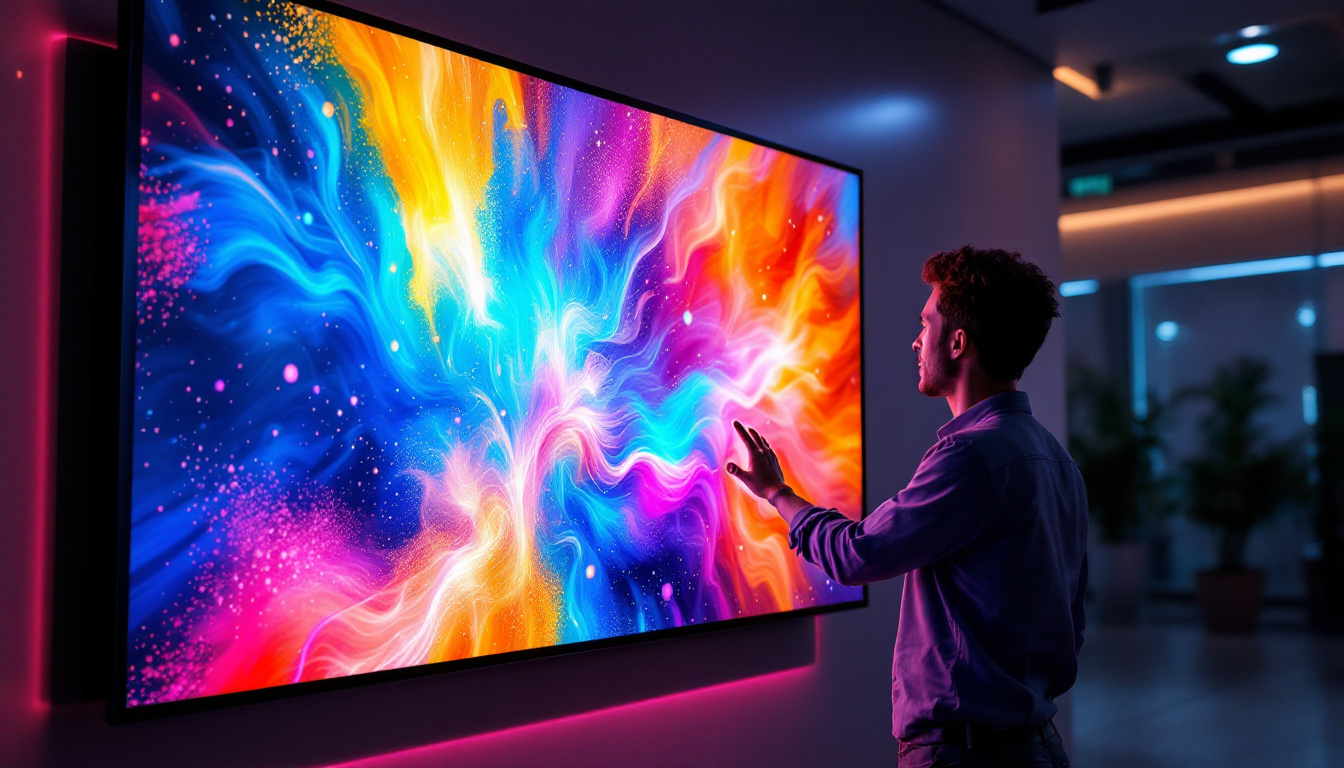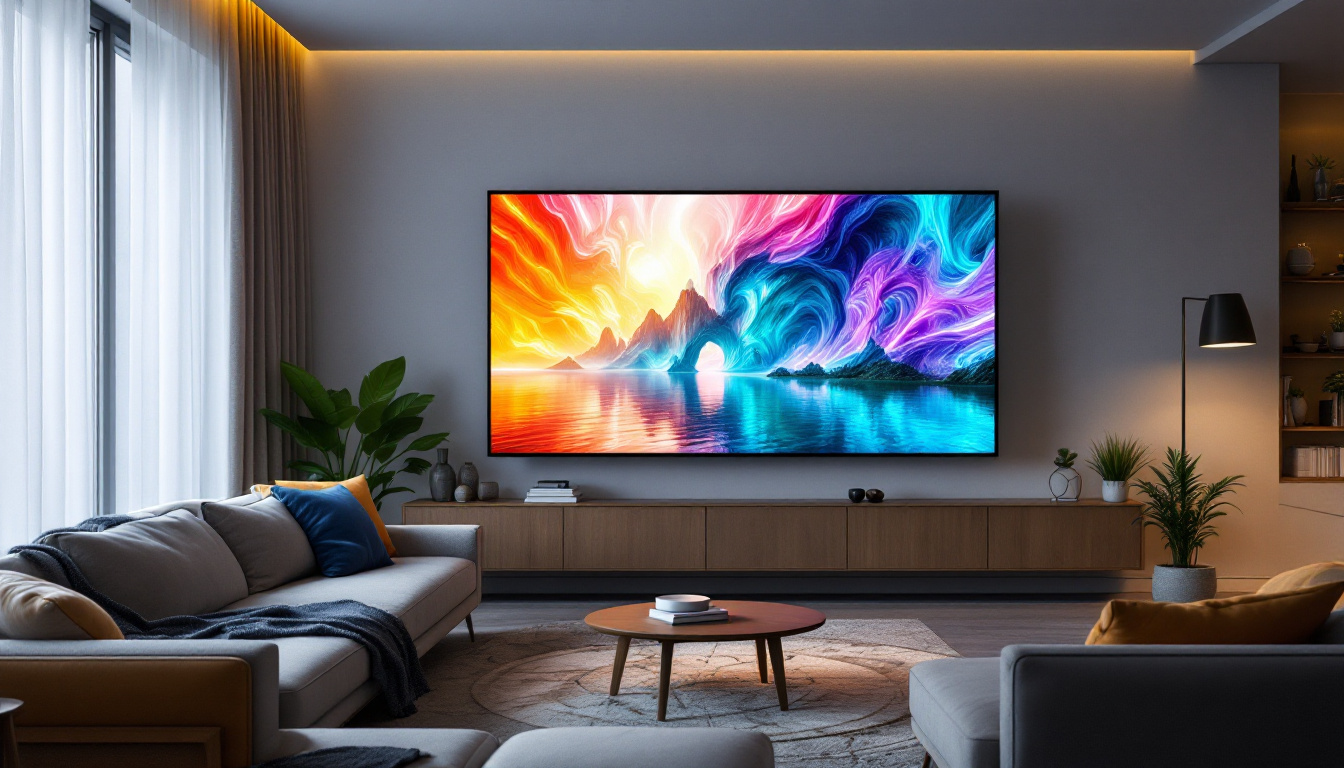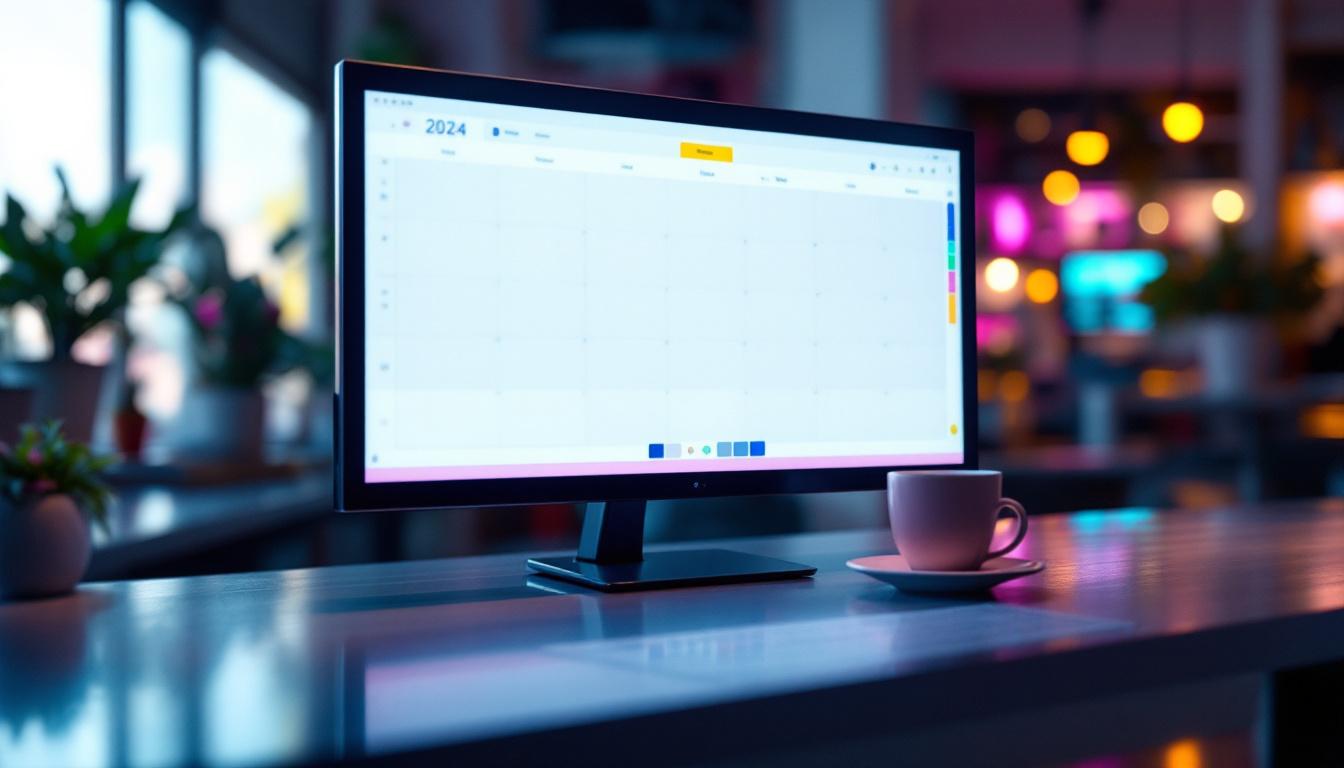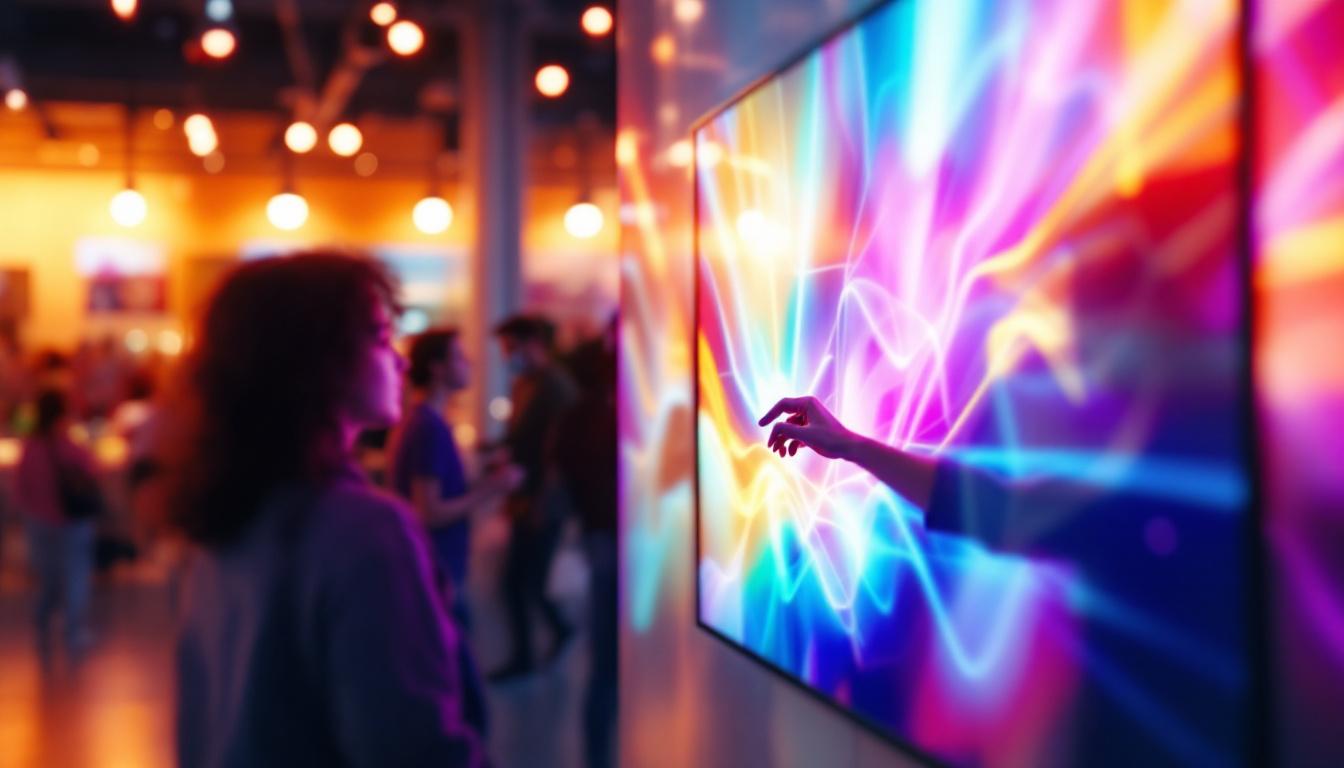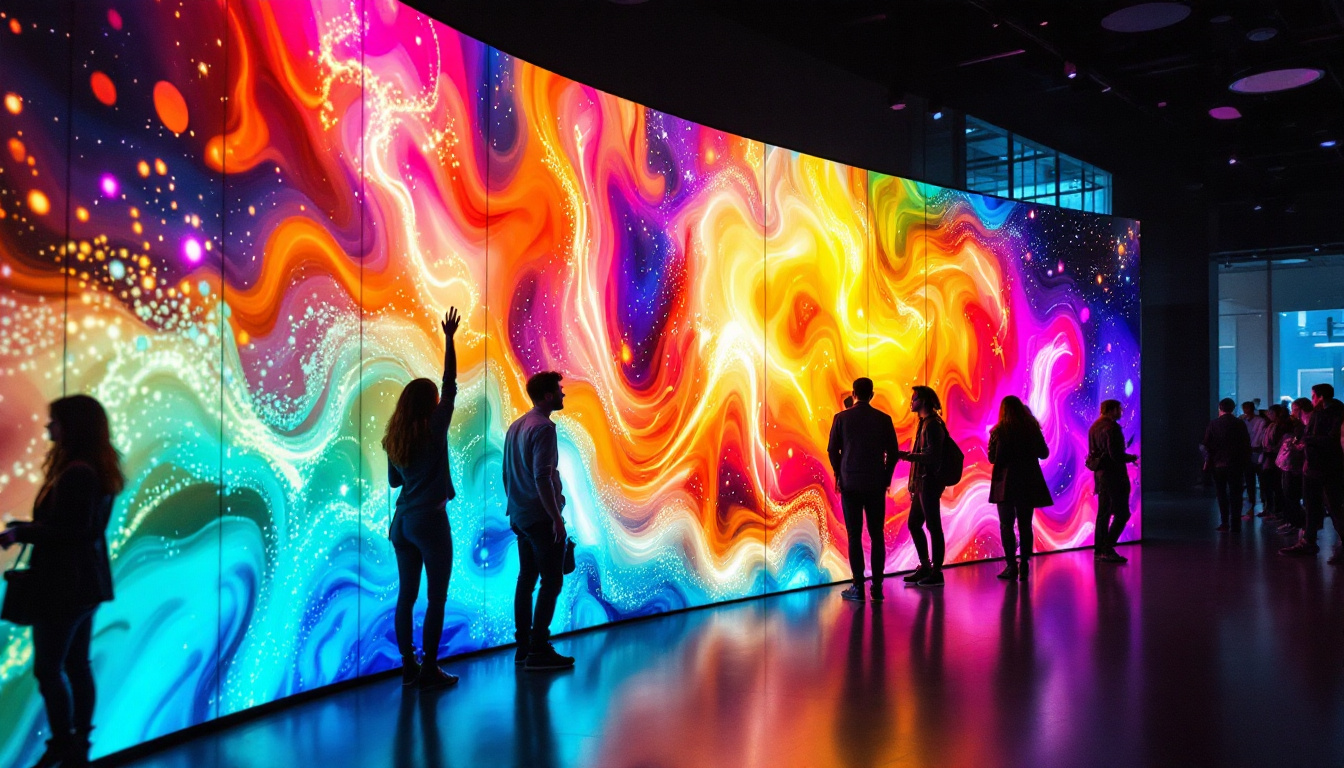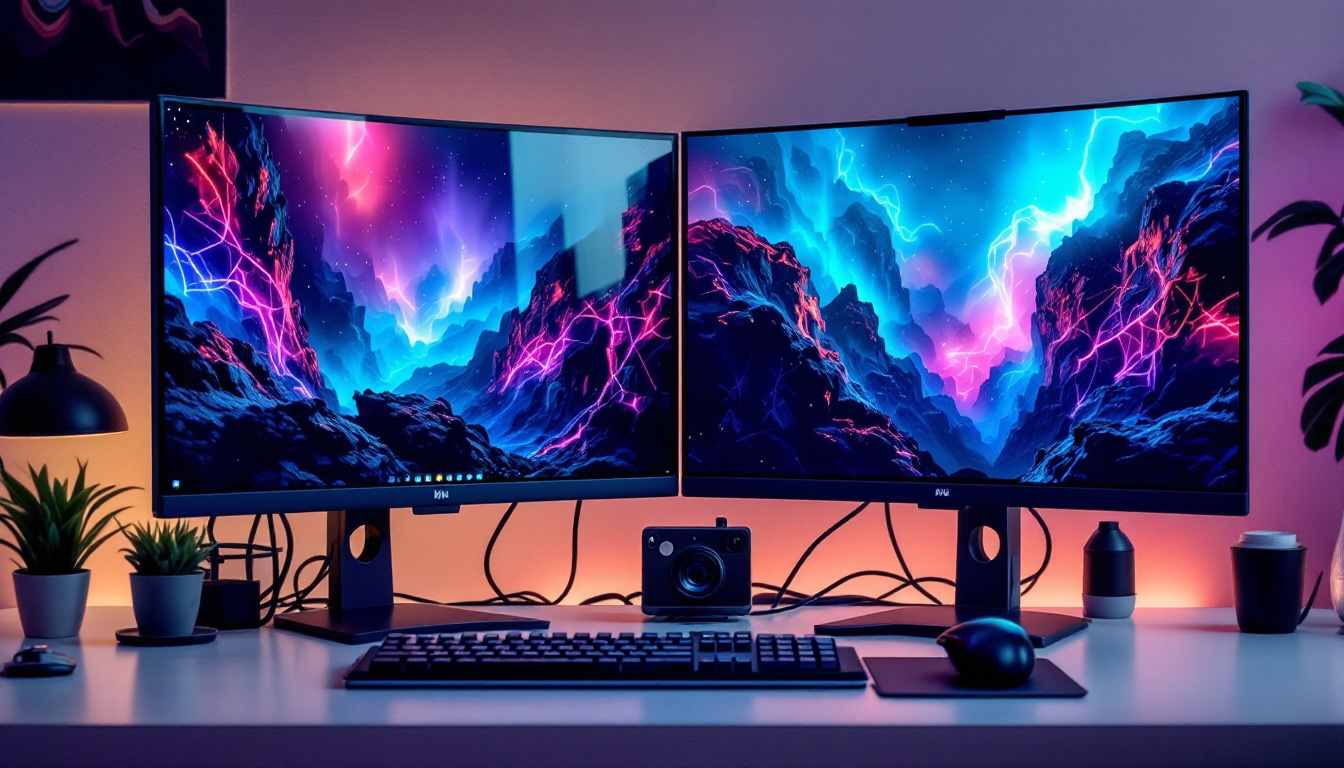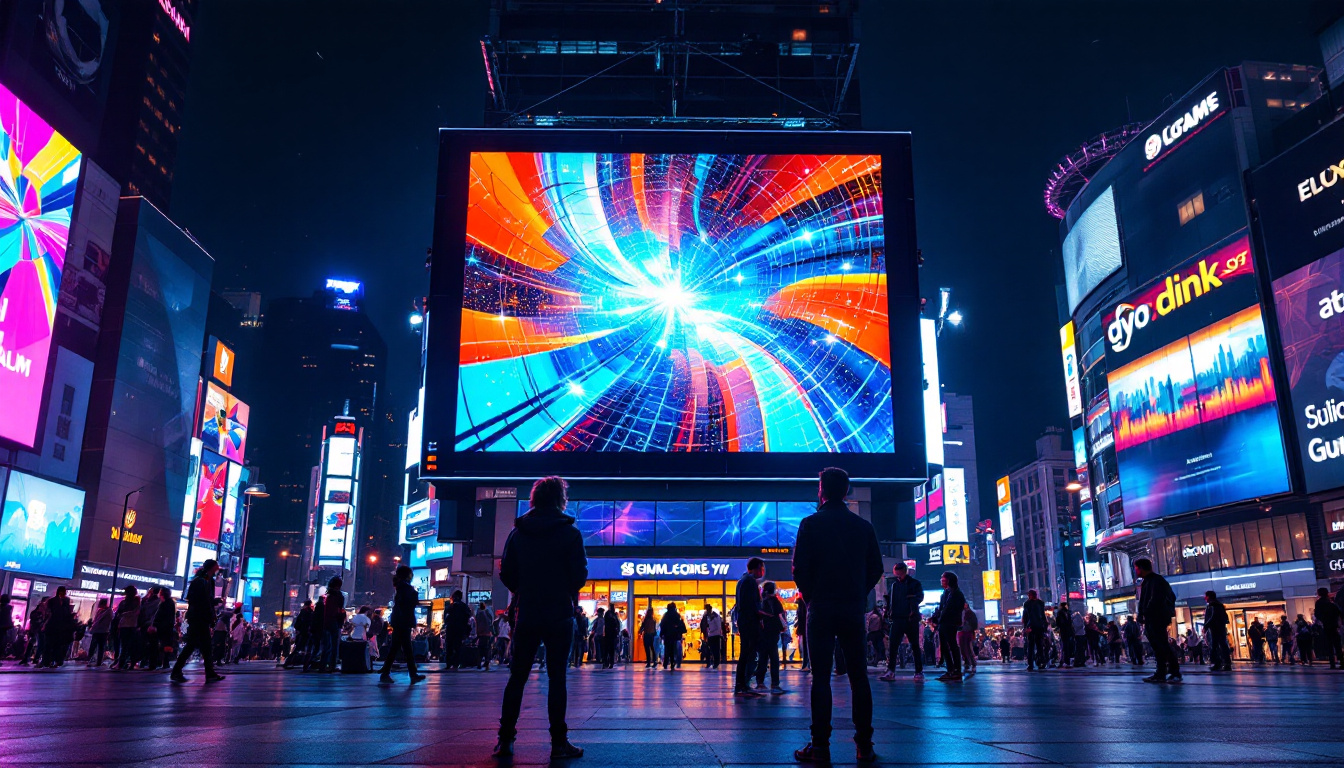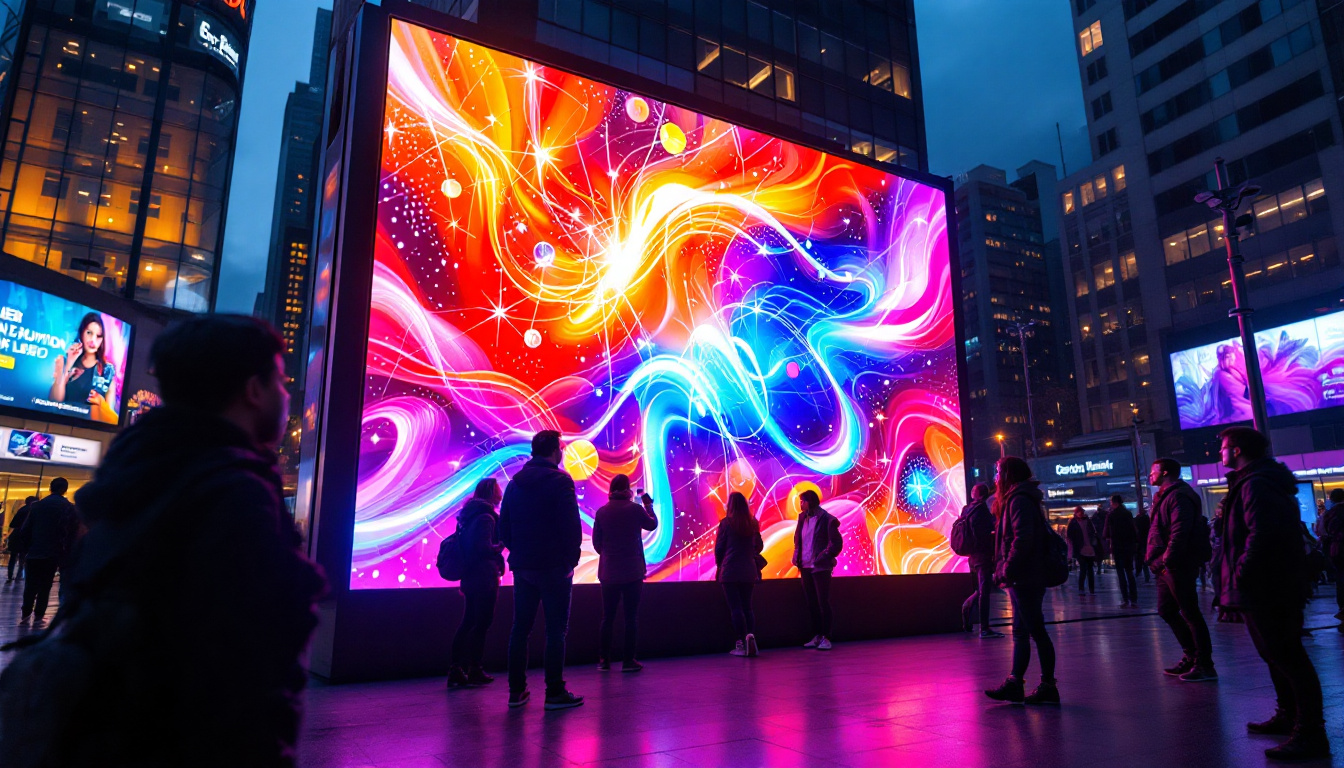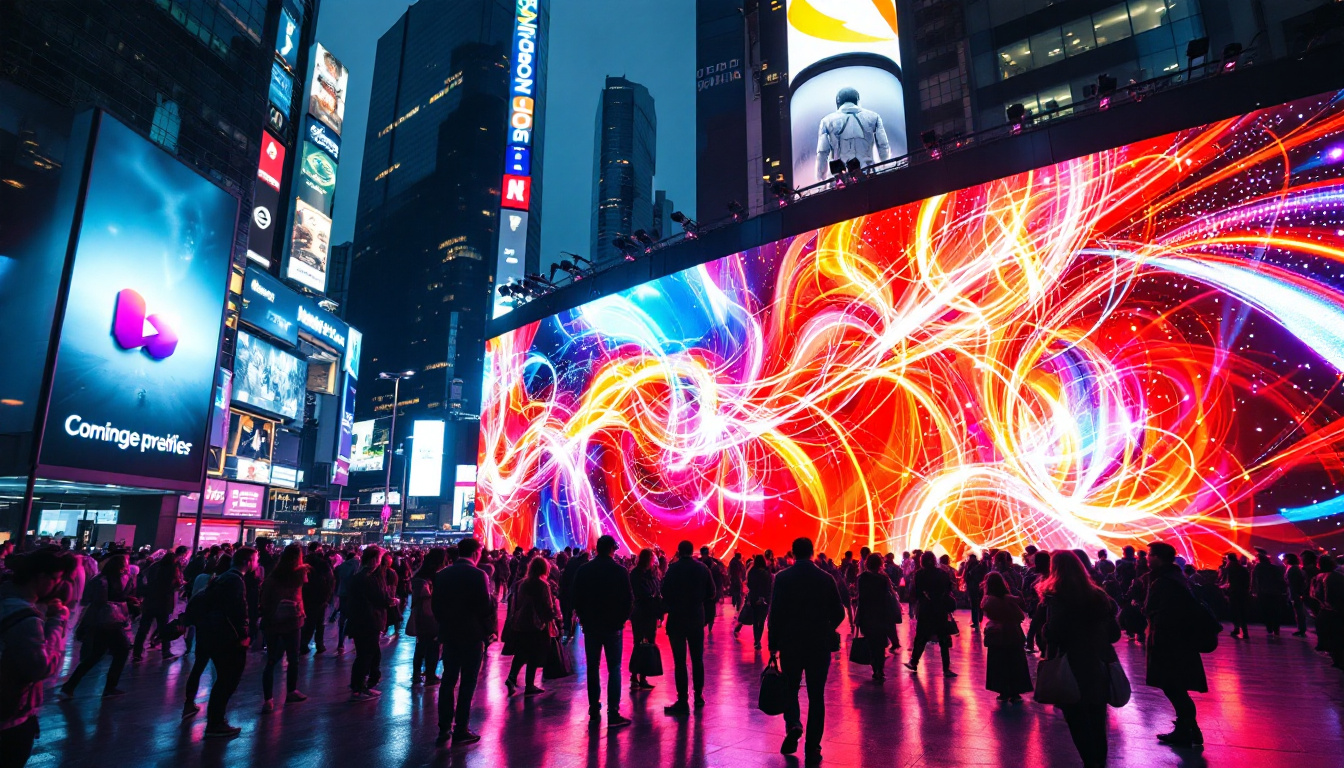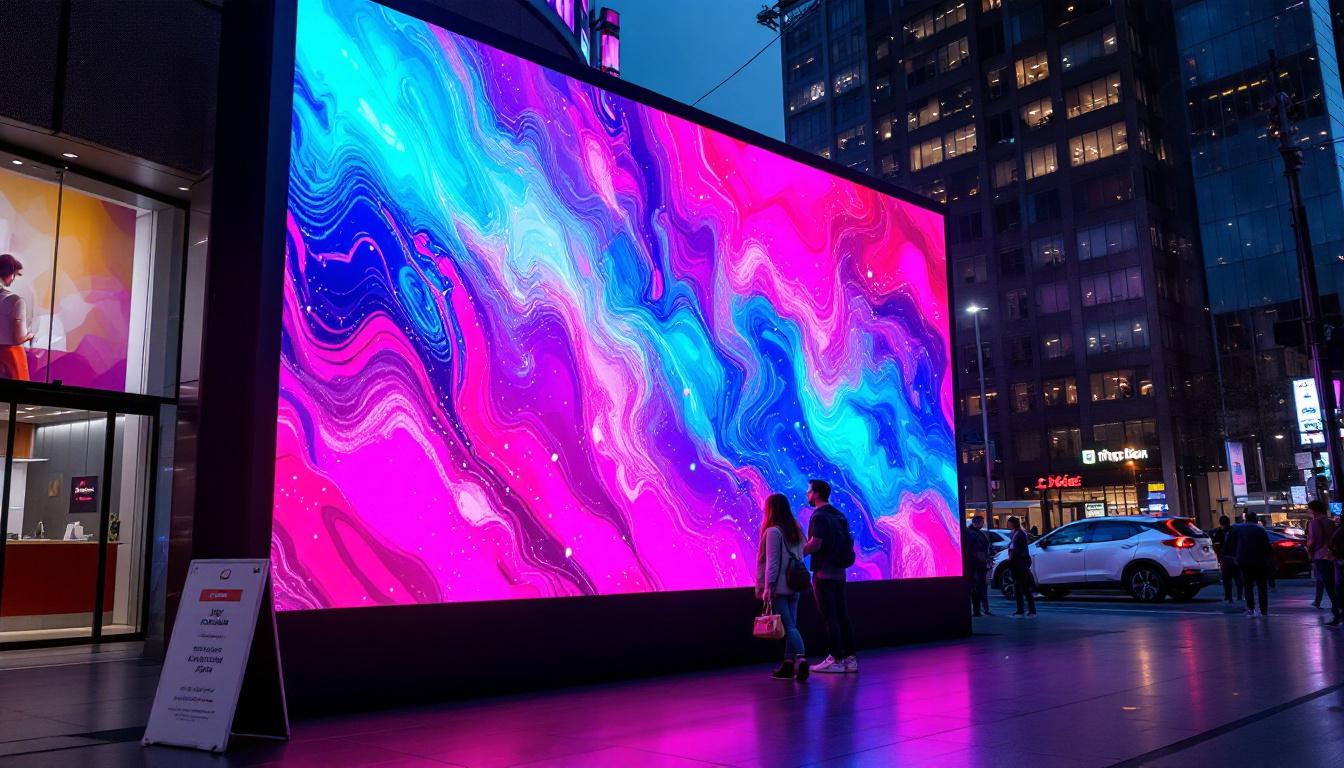In the realm of modern technology, LED displays have become an essential component across various industries, from advertising to entertainment and beyond. The term “160 X 1.3” refers to a specific configuration of LED displays that has garnered attention for its versatility and efficiency. This article delves into the intricacies of the 160 X 1.3 LED display, exploring its features, applications, and advantages.
Understanding LED Technology
Light Emitting Diodes (LEDs) are semiconductor devices that emit light when an electric current passes through them. This technology has revolutionized the way we think about illumination and display systems. Unlike traditional lighting, LEDs are compact, energy-efficient, and have a longer lifespan. Their ability to produce bright, vibrant colors while consuming minimal energy has made them a popular choice in various sectors, from residential lighting to large-scale advertising displays.
How LEDs Work
At the core of LED technology is the principle of electroluminescence. When electrons recombine with holes in a semiconductor material, energy is released in the form of photons, which we perceive as light. This process allows for various colors to be produced depending on the materials used in the semiconductor. The specific wavelengths of light emitted can be finely tuned by altering the composition of the semiconductor materials, leading to a spectrum of colors that can be utilized in everything from decorative lighting to sophisticated displays.
LEDs can be arranged in various configurations to create displays of different sizes and resolutions. The “160 X 1.3” designation refers to a specific arrangement of these diodes, which can be particularly effective in certain applications. This configuration is often used in digital signage, where a long, narrow display can convey information in a scrolling format, making it ideal for tickers or announcements in public spaces.
Advantages of LED Displays
LED displays offer numerous advantages over traditional display technologies. They are known for their high brightness levels, which make them suitable for both indoor and outdoor use. Additionally, they consume less power, which translates to lower operational costs. This energy efficiency not only benefits businesses economically but also contributes to environmental sustainability, as reduced energy consumption leads to lower carbon emissions.
Another significant advantage is their durability. LED displays are resistant to shock and vibration, making them ideal for dynamic environments. Furthermore, they can be easily scaled to meet the needs of various applications, from small screens to large video walls. The modular nature of LED technology allows for seamless integration into a variety of settings, whether it’s for a concert stage, sports arena, or retail environment. Additionally, advancements in LED technology have led to improvements in color accuracy and refresh rates, providing a more engaging visual experience for audiences.
Moreover, the versatility of LED displays extends to their ability to be programmed for dynamic content. This means that businesses can easily update their messaging, display real-time information, or create eye-catching animations that capture the attention of passersby. The potential for interactivity, such as touch-sensitive screens or integration with mobile devices, further enhances the user experience, making LED displays not just a tool for communication, but a platform for engagement.
Exploring the 160 X 1.3 Configuration
The “160 X 1.3” LED display configuration consists of 160 pixels in width and 1.3 pixels in height, creating a long and narrow display. This unique aspect ratio makes it particularly suitable for specific applications where traditional display formats may not suffice. The compact design allows for seamless integration into various environments, making it a versatile choice for businesses and organizations looking to enhance their visual communication strategies.
Applications of 160 X 1.3 Displays
One of the primary applications of the 160 X 1.3 LED display is in digital signage. Businesses utilize these displays for advertising, information dissemination, and branding. Their elongated shape allows for scrolling text or dynamic content that can capture the attention of passersby. Retail stores, for example, can use these displays to showcase promotions or highlight new products, ensuring that critical messages are delivered effectively and attractively.
Additionally, these displays are often used in transportation hubs, such as airports and train stations, where they can provide real-time information in a compact format. Their ability to convey critical information quickly and clearly is invaluable in such environments. Beyond transportation, they are also increasingly found in sports arenas, where they can display scores, player statistics, and other relevant updates in a format that is easy to read from a distance, enhancing the spectator experience.
Design Considerations
When designing a system that incorporates a 160 X 1.3 LED display, several factors must be considered. The viewing distance is crucial, as it determines the optimal pixel density for clarity. For instance, a display intended for close viewing may require a higher resolution than one meant for distant observation. This aspect is particularly important in settings like conference rooms or auditoriums, where audience members may be seated at varying distances from the screen.
Another consideration is the environment in which the display will be used. Outdoor displays must be weather-resistant and capable of withstanding varying light conditions. In contrast, indoor displays may prioritize aesthetics and integration with existing decor. Furthermore, the choice of color and brightness settings can significantly impact visibility and engagement, especially in brightly lit areas. Designers must also think about the mounting options and ensure that the display is securely installed to prevent any potential hazards, particularly in high-traffic areas.
Technical Specifications of 160 X 1.3 Displays
Understanding the technical specifications of a 160 X 1.3 LED display is essential for making informed decisions regarding its implementation. Key specifications include pixel pitch, brightness, and refresh rate.
Pixel Pitch
Pixel pitch refers to the distance between the centers of two adjacent pixels. In the case of a 160 X 1.3 display, a smaller pixel pitch typically results in a higher resolution and better image quality. This is particularly important for applications where detailed graphics or text are displayed.
For instance, a pixel pitch of 2.5 mm may be suitable for indoor environments, while a larger pitch, such as 10 mm, may be more appropriate for outdoor settings where the viewing distance is greater.
Brightness and Contrast
Brightness is measured in nits, and it is a critical factor for LED displays, especially those used outdoors. A higher brightness level ensures that the display remains visible even in direct sunlight. The contrast ratio is also important, as it affects the clarity of the images and text displayed.
For a 160 X 1.3 display, a brightness level of at least 1,500 nits is often recommended for outdoor use, while indoor displays may operate effectively at lower brightness levels.
Refresh Rate
The refresh rate of an LED display refers to how often the image is updated per second, measured in Hertz (Hz). A higher refresh rate results in smoother motion and reduces flicker, which is particularly important for video content.
For a 160 X 1.3 display, a refresh rate of 60 Hz is generally acceptable for most applications, but higher rates may be necessary for fast-moving content or high-definition video.
Installation and Maintenance
Proper installation and maintenance of a 160 X 1.3 LED display are crucial for ensuring optimal performance and longevity. The installation process involves several steps, including site assessment, structural support evaluation, and electrical setup.
Installation Process
The first step in the installation process is to conduct a thorough site assessment. This involves evaluating the location where the display will be installed, considering factors such as visibility, accessibility, and environmental conditions. Structural support must also be assessed to ensure that the display can be securely mounted.
Once the site is prepared, the electrical setup must be completed. This includes connecting the display to power sources and integrating it with control systems for content management. Proper cabling and connections are essential to avoid signal loss and ensure reliable operation.
Maintenance Requirements
Regular maintenance of LED displays is vital for preserving their functionality and appearance. This includes routine cleaning to remove dust and debris, which can affect brightness and clarity. Additionally, periodic inspections should be conducted to identify any potential issues, such as dead pixels or electrical problems.
In some cases, software updates may be necessary to enhance functionality or address security vulnerabilities. Keeping the display’s software up to date ensures that it operates efficiently and securely.
Future Trends in LED Display Technology
The field of LED display technology is continually evolving, with advancements that promise to enhance performance and expand applications. As industries increasingly adopt digital signage and visual communication solutions, the demand for innovative LED displays is on the rise.
MicroLED Technology
One of the most promising developments in LED technology is MicroLED. This technology utilizes microscopic LEDs to create displays with exceptional resolution and color accuracy. MicroLED displays are expected to be more energy-efficient and offer improved brightness compared to traditional LED displays.
As MicroLED technology matures, it may become a viable alternative for applications currently utilizing 160 X 1.3 displays, offering even greater flexibility and performance.
Integration with Smart Technologies
Another trend is the integration of LED displays with smart technologies. This includes the use of sensors, IoT devices, and artificial intelligence to create interactive and responsive displays. Such advancements can enhance user engagement and provide real-time data analytics for businesses.
For instance, a 160 X 1.3 display integrated with smart technology could adapt its content based on audience demographics or environmental conditions, providing a more personalized experience.
Conclusion
The 160 X 1.3 LED display configuration represents a unique solution for various applications, particularly in digital signage and information dissemination. Its elongated design, combined with the benefits of LED technology, makes it a versatile choice for businesses and organizations.
As technology continues to evolve, the future of LED displays looks promising, with innovations such as MicroLED and smart integration on the horizon. Understanding the intricacies of LED displays, including their technical specifications and maintenance requirements, is essential for maximizing their potential.
Ultimately, the 160 X 1.3 LED display stands as a testament to the advancements in display technology, offering a blend of efficiency, durability, and visual impact that can meet the demands of a rapidly changing world.
Discover LumenMatrix LED Display Solutions
Ready to elevate your visual communication strategy with the latest in LED display technology? LumenMatrix is at the forefront of innovation, offering a comprehensive range of LED display modules designed to captivate and engage your audience. From versatile Indoor and Outdoor LED Wall Displays to dynamic Vehicle and Sports LED Displays, our solutions are tailored to meet your unique needs. Experience the power of Custom LED Displays, All-in-One solutions, and groundbreaking LED Transparent Displays. Embrace the future with LumenMatrix and transform your space into a vibrant canvas of possibilities. Check out LumenMatrix LED Display Solutions today and see your vision come to life.

